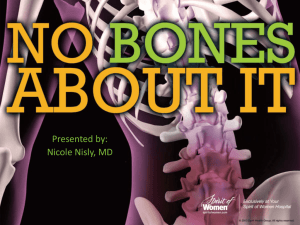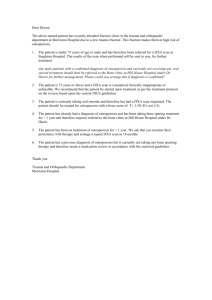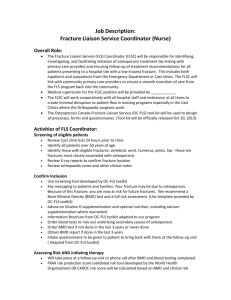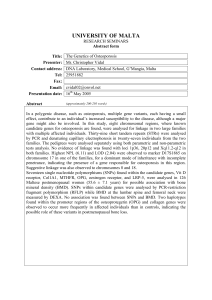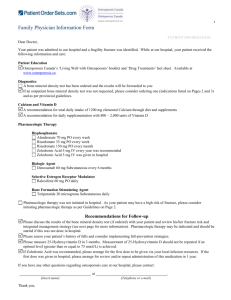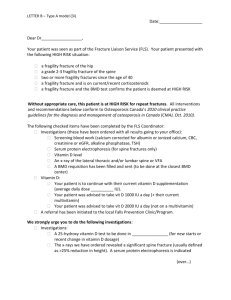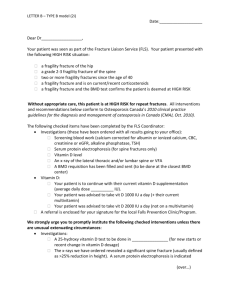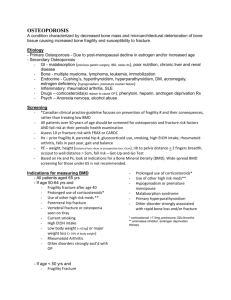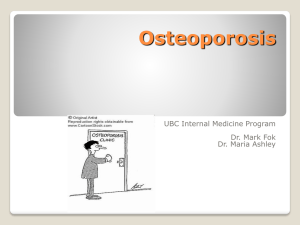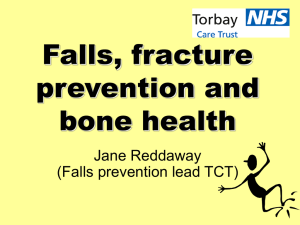Indications for Use
advertisement
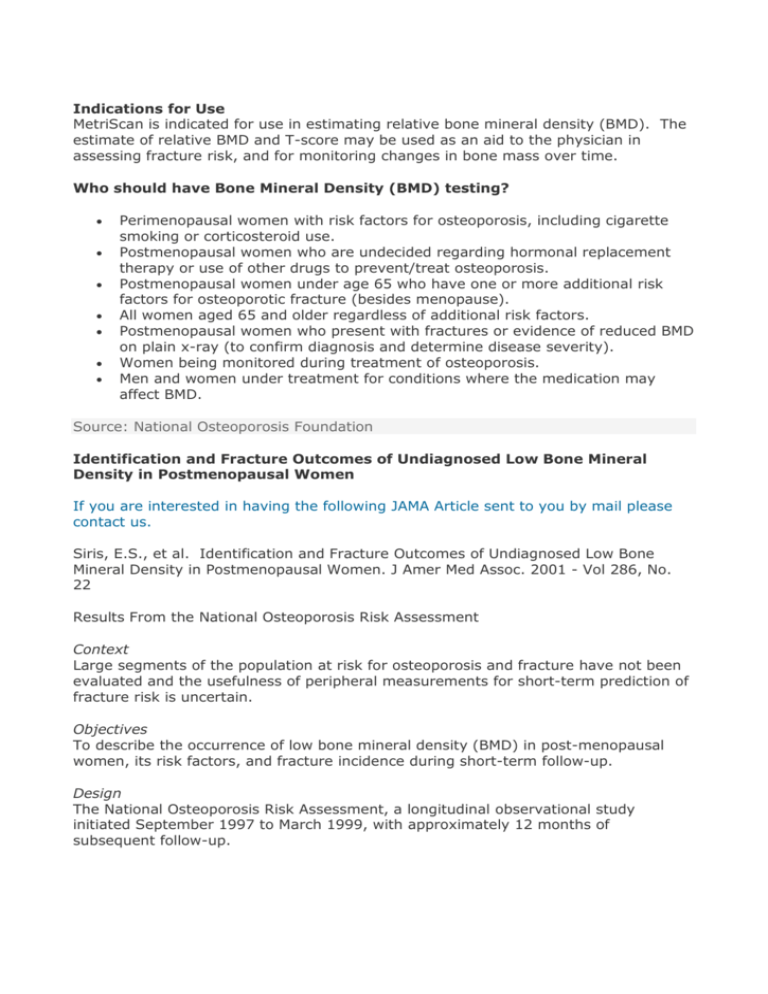
Indications for Use MetriScan is indicated for use in estimating relative bone mineral density (BMD). The estimate of relative BMD and T-score may be used as an aid to the physician in assessing fracture risk, and for monitoring changes in bone mass over time. Who should have Bone Mineral Density (BMD) testing? Perimenopausal women with risk factors for osteoporosis, including cigarette smoking or corticosteroid use. Postmenopausal women who are undecided regarding hormonal replacement therapy or use of other drugs to prevent/treat osteoporosis. Postmenopausal women under age 65 who have one or more additional risk factors for osteoporotic fracture (besides menopause). All women aged 65 and older regardless of additional risk factors. Postmenopausal women who present with fractures or evidence of reduced BMD on plain x-ray (to confirm diagnosis and determine disease severity). Women being monitored during treatment of osteoporosis. Men and women under treatment for conditions where the medication may affect BMD. Source: National Osteoporosis Foundation Identification and Fracture Outcomes of Undiagnosed Low Bone Mineral Density in Postmenopausal Women If you are interested in having the following JAMA Article sent to you by mail please contact us. Siris, E.S., et al. Identification and Fracture Outcomes of Undiagnosed Low Bone Mineral Density in Postmenopausal Women. J Amer Med Assoc. 2001 - Vol 286, No. 22 Results From the National Osteoporosis Risk Assessment Context Large segments of the population at risk for osteoporosis and fracture have not been evaluated and the usefulness of peripheral measurements for short-term prediction of fracture risk is uncertain. Objectives To describe the occurrence of low bone mineral density (BMD) in post-menopausal women, its risk factors, and fracture incidence during short-term follow-up. Design The National Osteoporosis Risk Assessment, a longitudinal observational study initiated September 1997 to March 1999, with approximately 12 months of subsequent follow-up. Setting and Participants A total of 200,160 ambulatory postmenopausal women aged 50 years or older with no previous osteoporosis diagnosis derived from 4236 primary care practices in 34 states. Conclusions Almost half of this population had previously undetected low BMD, including 7% with osteoporosis. Peripheral BMD results were highly predictive of fracture risk. Given the economic and social costs of osteoporosis fractures, strategies to identify and manage osteoporosis in the primary care setting need to be established and implemented.

